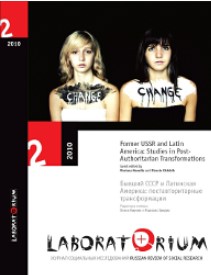IMPOVERISHMENT OF THE MIDDLE CLASS IN ARGENTINA: THE “NEW POOR” IN LATIN AMERICA
IMPOVERISHMENT OF THE MIDDLE CLASS IN ARGENTINA: THE “NEW POOR” IN LATIN AMERICA
Author(s): Gabriel Kessler, María Mercedes Di VirgilioSubject(s): Economic policy, Government/Political systems, Welfare systems, Culture and social structure , Post-War period (1950 - 1989), Transformation Period (1990 - 2010), Socio-Economic Research
Published by: Центр независимых социологических исследований (ЦНСИ)
Keywords: Middle class; Argentina; impoverishment; new poverty; debt;
Summary/Abstract: Through much of the twentieth century, Argentina stood out among Latin American nations due to the significant influence of its middle class. Various elements shaped this class, which not only occupied public service positions, as was the case in most of Latin America (Touraine 1988), but was also involved in a wide range of occupations. Its genesis occurred during the 1930s, when differential rent deriving from the agricultural sector resulted in distribution toward the administrative, service, and public administration sectors. During both the first and the second administrations of Juan D. Perón (1946–55), social benefits favored the middle segments of society and also led to the formation of a protected working class that, to a large extent, considered itself part of the middle class. Economic modernization generated new qualified jobs and led to remarkable intergenerational social mobility. These new jobs could not be taken by the elites, thus allowing middle-classes to gain access to strategic positions. This was another distinctive feature of Argentina.
Journal: Laboratorium. Журнал социальных исследований
- Issue Year: 2/2010
- Issue No: 2
- Page Range: 200-220
- Page Count: 21
- Language: English

